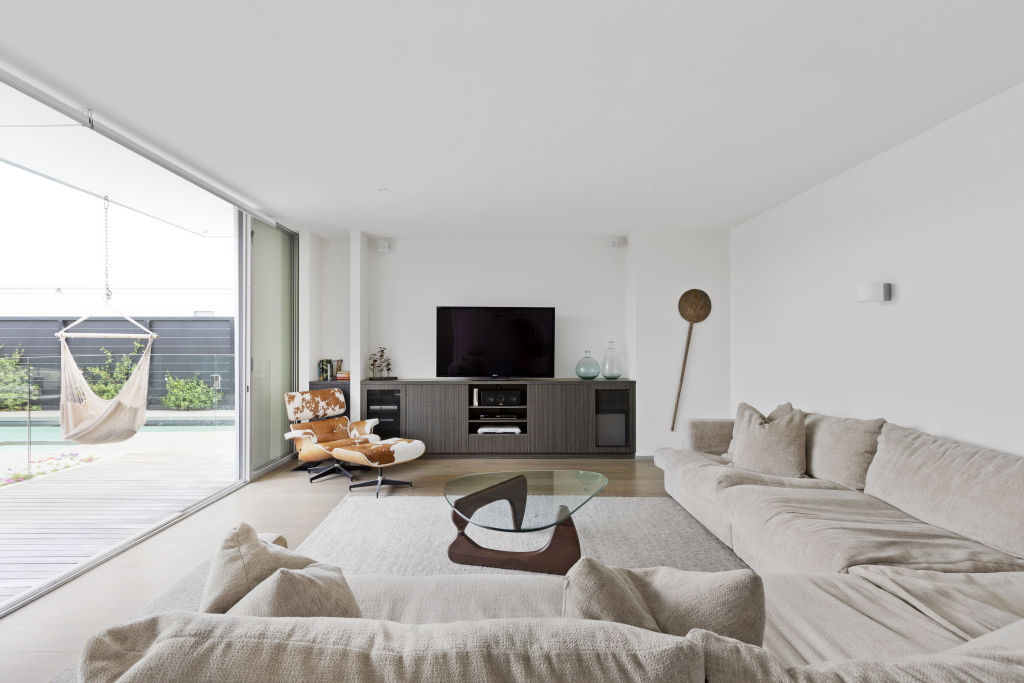How to renovate for a mess-free home

Renovating a home is a fine balance between aesthetics and practicality.
“Many of my clients have renovated and not thought about the end product and how they’ll live in it – they’ve thought about the aesthetics,” says Sarah Cottman, professional organiser at Heavenly Order.
Compromises need to be made to ensure a beautiful home is also one that remains that way after the post-renovation shine wears off. With the right renovation decisions, a messy home can be avoided.
Declutter then plan storage
It’s no surprise storage is paramount for reducing mess in a home.
More than a third of renovating home owners purchased a storage or organisation system for their home renovation project in 2019, according to Houzz. A 2018-19 kitchen report also revealed 29 per cent of those who renovated their kitchen addressed storage issues.
Storage simply means all moveable or loose items have a designated spot, therefore creating an incentive to put them away.
However, planning for the right amount of storage is difficult especially when trying to predict what life inside the home will look 10 years into the future.
Cottman’s tip is to declutter before you renovate, not after.

“If the vision for your life is to have neat, streamlined cupboards and everything hidden behind doors, that’s great, but you’ll need to declutter first,” she said.
Sarah Wood, director at The Middlewoman Building and Project Management, says purpose-built storage where possible is the way to go.
“The one thing we really encourage people to do is have built-in cabinetry or purpose-build,” Wood said. “The main thing is thinking through what you’re going to use the space for, if possible, then building in the cabinetry.”
Cottman agrees, noting that storage for storage’s sake does not equate to a mess-free home.
“What a lot of people think when they have lots of clutter is: I need more storage,” she said. “It’s actually not that and you have to change the mindset.
“I often go into people’s homes after they’ve had a renovation and they don’t have enough storage. Even when that’s what they’ve spent $100,000 on.”
Hide away your power points
A quick look around the house and chances are there’s a not-so-sightly phone charger poking out of a power point. Wood’s solution is to plan power points carefully and conceal them where possible.
“They [clients] worry putting in extra power points will cost them a lot of money, but depending on the structure of the home, like timber floors, it’s very easy to run extra power points,” she said.
“Thinking about putting power points inside the cabinetry is something that will help with tidiness. It’s very easy to run the power points inside the cabinetry.”

Wood recommends built-in cabinets to replace furniture units like television stands can help keep messy leads and cables tucked away.
“A purpose-built TV cabinet with a charging station in a drawer will put away all those leads. It’s about creating a structural object for people to use with purpose,
“We also put power points in the shaving cabinets so you can plug in shavers and electric toothbrushes and it’s hidden behind the cupboard.”
The less surface space for clutter, the better
Open surfaces are a breeding ground for mess in the form of clutter and dust. Avoiding open shelves and prioritising closed storage solutions will reduce barriers that make cleaning difficult, Cottman says.
“When areas are clutter-free, it’s easier to clean. If you’re constantly moving things to try and clean, you’re probably going to give up sooner than if you were to easily dust the bedside table.”
Wood said she likes to install a slim cupboard next to stoves to keep clutter stored away rather than on bench tops.
“We put a narrow cupboard near the stove to put all the cooking oils and chopping boards so they’re handy near the stove, rather than sitting directly next to the stove,” she said.
Be wary of open-plan living areas
Kitchen, living and dining areas are a hot spot for mess, especially with a trend towards open-plan spaces.
“Start thinking of a mental boundaries where spots start and stop,” Cottman advised.
“One of the issues I have seen is everybody wants their home open plan. So it’s very easy for clutter to breed from one spot to another because there’s not clearly delineated spaces or rooms.”

Ensure each space – living, kitchen and dining – is individually considered with storage units built-in for each zone can help contain clutter.
Dedicate storage for renovation material leftovers
Store away the paints and materials used during a renovation to use for touch-ups in the future, Cottman advises.
“Have a spot for renovation materials that will be useful in the future,” Cottman said.
“I would suggest making a note of paint, wallpaper, where you got it from and what the make-up was.”
Should there be an accident or any wear and tear, the leftover materials can help patch things up quickly rather than left unsightly for an extended period of time.
We recommend
We thought you might like
States
Capital Cities
Capital Cities - Rentals
Popular Areas
Allhomes
More










